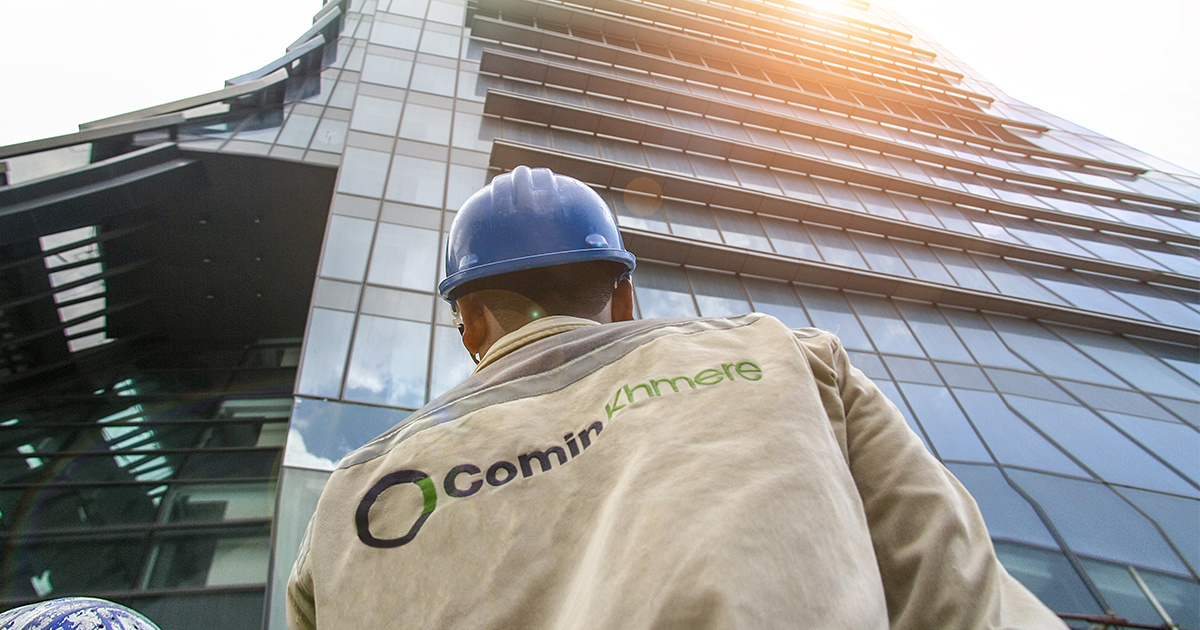RISK MANAGEMENT: AN ESSENTIAL PART OF STRATEGY
Michael Freeman, Vice President Contracting, Comin Asia.
As the VP of Comin Asia Contracting, risk management is a factor I think about continuously. Working in the Mechanical & Electrical engineering and construction business where risk has a broad range, from health & safety of our employees, brand perception and of course financial management it is essential to have a risk management strategy at the forefront of every business decision.
Risk Management in construction is a topic that often leads to heated debate in the industry. I’ve been involved in my fair share of these debates through the years. Views can vary differently from contractor to contractor and even more variance from a developer’s point of view.
I recently had a conversation with a developer who advised me he’d awarded a lump sum contract to a contractor and was satisfied that all his risk had now been passed on to the contractor.
My experience in the industry has led me to the conclusion that he was very much mistaken. If his only risk was financial he may have been correct. But risks in construction are never purely financial. In my opinion financial failings are a lag indicator and a result of failures in other areas. Risks cover all aspects of construction and these should be the concern of every stakeholder. Safety, quality, time and environmental risks are but a few examples. Failure to manage these risks will result in a financial impact on the bottom line.
No developer, for example, will be unconcerned if a contractor on one of their projects has a major safety incident. This can affect the brand and reputation of all stakeholders. Similarly, no developer will look back with satisfaction to financial savings at the start of a contract and be satisfied if the project over-runs on time and is delivered with poor quality.
Contractors, and I would say especially MEP contractors, take on huge risks with lump sum projects. We have numerous supply chain partners to work with in our efforts to successfully deliver projects for our clients and we have to ensure our risk management processes are robust, fit for purpose and adhered to. We have to maintain the highest safety standards in complex, bespoke situations. We must ensure the quality and timeliness of our project execution and work closely in coordination with main contractors and end users.
So how do we do it? For me there are four few key aspects to risk management.
- Understand the Scope
Scope Management is a topic on its’ own. It sounds too obvious but it happens time and again that two parties can have different interpretations of the contract. Understanding the technical drawings will take you so far but it’s imperative that project execution teams fully understand the contract and specifications.
- Identify
Only when the scope is understood can the risks be fully identified. It’s good to get input from all departments. Risks can come from every department involved in a construction project – engineering, safety, planning, procurement, HR etc. etc. There are several commonly used formats and these can be tweaked easily to suit different companies to ensure the right escalation path is followed.
- Understand the potential impact
The impact may be a straightforward financial impact, like scope gaps, incorrect quotations etc. Or they may be items which have non-financial impacts. Understanding the potential impact and the importance of that impact to all stake-holders is key to deciding on what, if any, mitigating action should be taken.
- Track and mitigate
It’s important to review the status of each risk regularly. Some can be closed with straightforward actions – eg. if a projected delivery date will impact critical path the procurement team may be able to expedite with the supplier. It may be prudent to pay more now to ensure on time delivery or it may be possible to accelerate future works to retain completion schedule. With the risk identified, the potential impacts understood the management team has the best opportunity to make the right decision.
Other risks may be impossible to close out until the project is completed. It’s still important that these are regularly reviewed. They may require actions under the contract on an ongoing basis. Just because a risk can’t be closed does not mean it cannot be mitigated.
Risk management is a key aspect for everyone involved in the construction industry. From developers, contractors, engineers, suppliers – understanding the financial and non-financial risks and making decisions with all of them taken in to account must be an essential part of the strategy and the project execution process.



